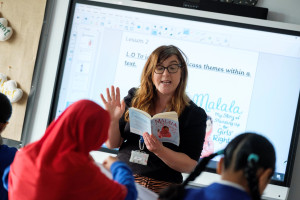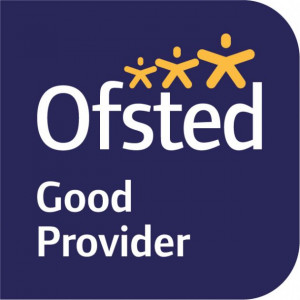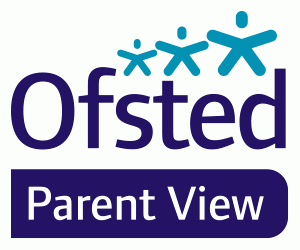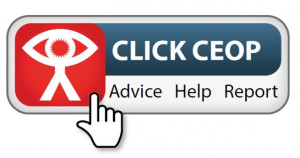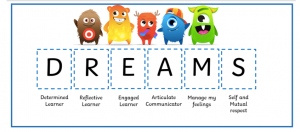Equality
Equality Statement:
‘All pupils and members of staff at Hunslet Moor Primary School are provided with opportunities to fulfil their potential whatever their sex, race, colour ethnic or national origin, marital status, age, sexual orientation, disability or religious belief.’
Our Equality objectives are;
- To promote cultural development and understanding through a rich range of experiences, both in and beyond the school
- To tackle prejudice and promote understanding in relation to people with disabilities and those of differing races, beliefs or religions, sexual orientation or gender
- To ensure that all pupils are given similar opportunities with regards to after-school clubs, activities and educational visits and experiences
- To allow equal access to information for all parents
Hunslet Moor Primary School Vision and Values
At Hunslet Moor Primary School we are committed to the inclusion of all pupils and community members. This includes equality of education and opportunity for all pupils, staff, parents and carers receiving services from our school, governors and other representatives who work with our school, irrespective of race, gender, disability, faith or religion or socio-economic background. We therefore:
- Believe that diversity is a strength, which should be reflected and celebrated by all who learn, teach and visit Hunslet Moor Primary School.
- Tackle discrimination by the positive promotion of equality, challenging bullying and stereotypes, creating an environment which champions respect for all.
- Provide an environment which enables every pupil to be safe and encourages health.
- Believe that every teacher is a teacher of every child or young person including those with Special Educational Needs or Disabilities (SEND).
- Value every individual and enable them to enjoy their learning, achieve their full potential and economic well-being.
- Enable every pupil to make a positive contribution to their school and community.
- Identify and respond to the diverse and individual needs of our community members.
- Identify and overcome potential barriers to learning.
- Set appropriate learning challenges for every pupil.
- Promote the development of staff to enable them to deliver an exciting, challenging and inclusive curriculum, whilst keeping abreast of local and national changes.
Equality Information
On the 1st October 2010, the Equality Act 2010 replaced all existing equality legislation such as the Race Relations Act, Disability Discrimination Act and Sex Discrimination Act. The Equality Act 2010 was introduced to ensure protection from discrimination, harassment and victimisation on the grounds of specific characteristics (referred to as protected characteristics). This means that schools cannot discriminate against pupils or treat them less favourably because of their sex (gender), race, disability, religion or belief, gender reassignment, sexual orientation or pregnancy or maternity.
The Act introduced requires all schools to comply with the Public Sector Equality Duty and two specific duties.
Public Sector Equality Duty requires us a school to:
- Eliminate unlawful discrimination, harassment and victimisation Advance equality of opportunity between different groups
- Foster good relations between different groups
The Two “specific duties” requires us to:
- Publish information to show compliance with the Equality Duty
- Publish Equality Objectives at least every 4 years which are specific and measurable
We recognise that these duties reflect international human rights standards as expressed in the UN Convention on the Rights of the Child, the UN Convention on the Rights of People with Disabilities, and the Human Rights Act 1998.
Eliminating Discrimination
The school is aware of its obligations under the Equality Act 2010 and complies with non-discrimination provisions.
Where relevant, our policies include reference to the importance of avoiding discrimination and other prohibited conduct.
Staff and governors are regularly reminded of their responsibilities under the Equality Act, for example during meetings. Where this has been discussed during a meeting it is recorded in the meeting minutes.
New staff receive are provided with our Equality Policy and sign to say they have read and understood this and all staff receive refresher training every September.
The school has an equality link governor (Mr J Rees). They regularly liaise regarding any issues and make senior leaders and governors aware of these as appropriate.
We ensure we teach a wide curriculum which includes specific teaching of difference and equality (please see our curriculum pages). We also have assemblies and focus weeks/months, for example Black History, Anti Bullying, Mental Health.
Advancing Equality of Opportunity
As set out in the DfE guidance on the Equality Act, the school aims to advance equality of opportunity by:
- Removing or minimising disadvantages suffered by people which are connected to a particular characteristic they have (e.g. pupils with disabilities)
- Taking steps to meet the particular needs of people who have a particular characteristic (e.g. enabling staff and pupils of the Muslim faith to pray at prescribed times)
- Encouraging people who have a particular characteristic to participate fully in any activities (e.g. encouraging all pupils to be involved in the full range of school after school clubs)
In fulfilling this aspect of the duty, the school will:
- Publish attainment data each academic year showing how pupils with different characteristics are performing
- Analyse the above data to determine strengths and areas for improvement, implement actions in response and publish this information
- Make evidence available identifying improvements for specific groups (e.g. declines in incidents of homophobic or transphobic bullying)
- Publish further data about any issues associated with particular protected characteristics, identifying any issues which could affect our own pupils
- Provide a safe environment where there is a strong focus on high expectations and challenge to improve outcomes for all our children.
- Provide a learning environment where all learners learn to be independent and resilient with the support of those around them.
- Prepare children for life in a culturally diverse society where the children are able to be confident in understanding their place and responsibilities in their local, regional, national and international communities.
- Include and value the contribution of all families to our understanding of equality and diversity with a clear focus on the participation of children and parents in decision-making.
- Provide positive non-stereotyping information about different groups of people regardless of protected characteristics under the law (age, disability, gender, gender identity, race, religion or belief, sexual orientation, marriage or civil partnership and pregnancy/maternity)
- Plan systematically to improve our children’s understanding and promotion of diversity
- Actively challenge all types of discrimination.
- Ensure that positive messages and actions about inclusion, equality and diversity are part of our daily practice.
- Use all available information to set suitable learning challenges, respond to children’s individual needs and support children in overcoming potential barriers to their success.
- Ensure that all reasonable adjustments are made to ensure equality of opportunity with respect to disability or varying needs.
- Apply a graduated approach to identifying and supporting pupils and students with SEND.
- Have a co-ordinated assessment process towards an Education, Health and Care plan (EHC plan) for those children identified as having significant and complex needs, where families are fully involved in planning, commissioning and reviewing services.
Fostering Good Relations
The school aims to foster good relations between those who share a protected characteristic and those who do not share it by:
- Promoting acceptance, friendship and understanding of a range of religions and cultures through different aspects of our curriculum. This includes teaching in RE, citizenship and personal, social, health and economic (PSHE) education, but also activities in other curriculum areas. For example, as part of teaching and learning in English/reading, pupils will be introduced to literature from a range of cultures.
- Working with our local community. This includes inviting leaders of local faith groups to speak at assemblies, and organising school trips and activities based around the local community
- All pupils are encouraged to participate in the school’s activities, such as after school clubs.
- Actively promote parent/carer engagement to monitor that needs are met and provision is appropriate.
- Maintain high expectations of behaviour which demonstrate respect to others.
- Work closely with other agencies to actively promote inclusion, equality and diversity.
- Safeguarding training – through Leeds City Council
- Encourage all children to have a voice through children surveys
Equality Considerations in Decision Making
The school ensures it has due regard to equality considerations whenever significant decisions are made.
The school always considers the impact of significant decisions on particular groups. For example, when a school trip or activity is being planned, the school considers whether the trip:
- Cuts across any religious holidays
- Is accessible to pupils with disabilities
- Has equivalent facilities for boys and girls and pupils with a Special Educational Need or Disability.

